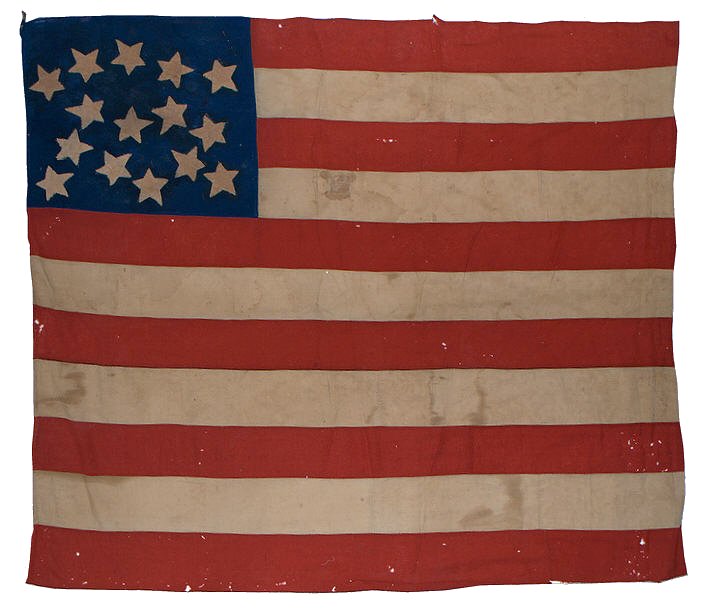
Although we typically
associate the number of stars on the American flag with
the number of states in the Union, the rupture between
the North and the South during the American Civil War
gave way to another meaning to the stars on a very rare
subset of American flags. Abolitionists in the
North were known to make flags that excluded the fifteen
slave states of the South. In the South, early citizens
of the Confederacy designed early Confederate
"prototype" flags, based on the design of the American
flag, that excluded the free states of the North. The
need for a new flag to represent the Confederacy spurred
a contest for its design. Boleslaw Mastai, in his
book The Stars and Stripes, writes, "not surprisingly,
therefore, when the choice of a flag for the South was
made the subject of a contest, and hundreds of entries
were submitted, the designs which retained both the
devices and colors of the Stars and Stripes were favored
above all others. The contest organized in 1861 to
select a design for the flag of the Confederacy
included, according to the chairman's report, 'a mass of
models or designs more or less copied from the United
States flag.' "1
This is a extremely
rare flag is one such example of the type. Its
fifteen stars represent the fifteen slave states and its
eleven stripes represent the eleven seceded states of
the Confederacy. The canton of the flag sits on
the red "war stripe" or "blood stripe". Among
early American flags in the Stars and Stripes format,
those made as Confederate prototypes are highly sought
after, since they embody the conflicting feelings those
in the South felt about keeping a semblance of the flag
of their forefathers even in the face of separating from
the Union. Even the first officially adopted flag,
in the Stars and Bars design, kept a wreath of stars on
a blue canton of and three broad red and white
stripes--much the same configuration as the Stars and
Stripes. The
pattern of the stars on this flag, with an arc of 5
stars above a jumble of the remaining 10 stars, is
visually interesting, and may also be symbolic.
Four of the slave states--Missouri, Maryland, Kentucky,
and Delaware--were known as "Border States".
Ultimately, they did not secede from the Union, but in
early 1861, their fate was still uncertain, with
spirited debate in each of their legislatures both for
and against secession. Five states--these four
border states, plus Virginia, formed the demarcation
line between the North and the South, and it's it's
likely that the arc of five stars at the top of the
canton represent these states.
The flag is
entirely hand sewn, and the fifteen crude stars are
double-applique and hand stitched to the beautiful blue
canton. The canton is diminutive and occupies a small
quadrant of the flag--a characteristic of some of the
earliest American flags, which often give deference, as
this flag does, to the broad stripes over the bright
stars. The wool of the flag is a very fine weave,
possibly a blend, and it's apparent that the flag is
made of older homemade materials found at hand which
pre-date the making of the flag itself. It's a
wonderful representation of the old South, made during
the tumultuous outbreak of the Civil War in the early
months of 1861.
1 The
Stars and Stripes, The American Flag as Art and as
History from the Birth of the Republic to the Present,
Mastai, Alfred Knopf, NY, 1973, pp. 130,137 |

